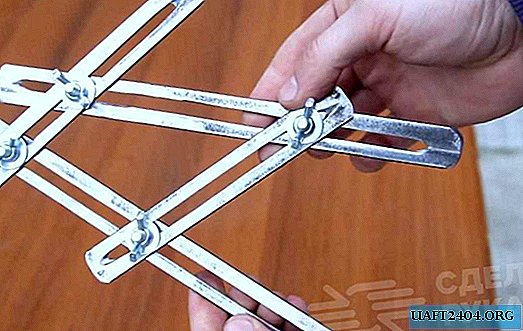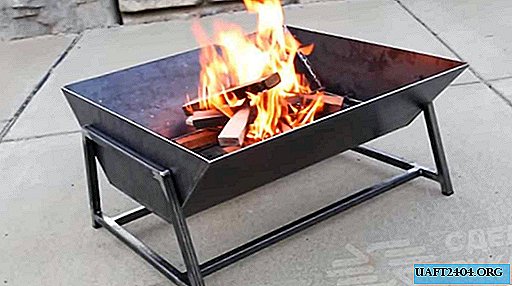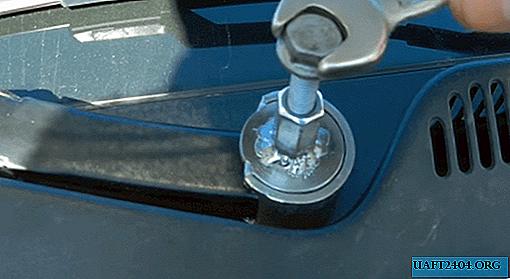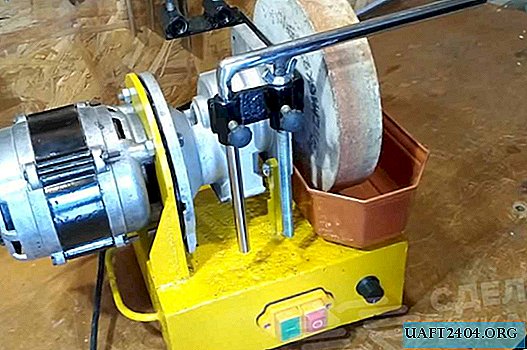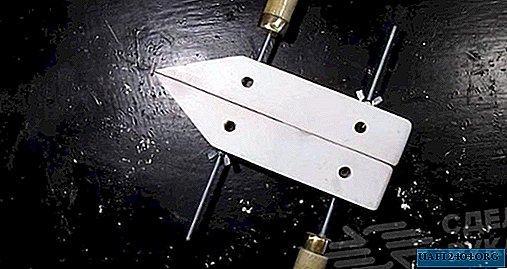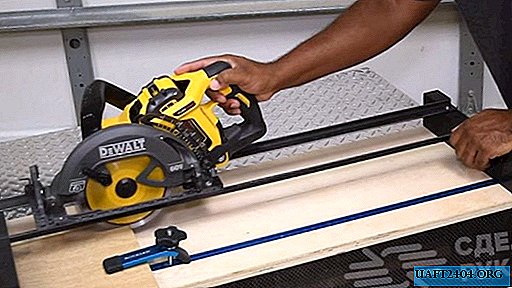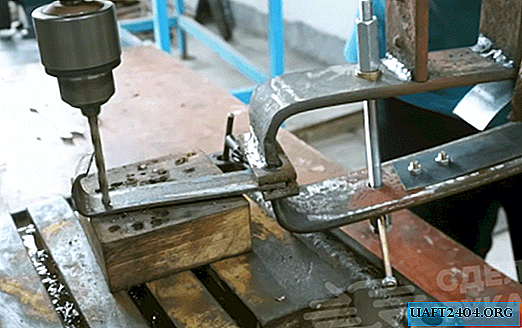Share
Pin
Tweet
Send
Share
Send

Will need
In addition to a set of worn rear brake pads, we will need: various bolts, nuts, including one elongated, studs and spray paint in spray cans of three colors. Tools and equipment that you will have to use are the most common:
- wire disc brush and pliers;
- hammer and punch without rebound;
- vice vise and chisel;
- a grinder and a drill with a snap;
- welding equipment;
- gas burner and cooling oil.
The sequence of transformation pads in the puller
Since the pads will be the basis of our puller, let's start by putting them in order, because they rust during operation, are covered with dust, dirt and particles of wear of the friction linings.

First, we process them with a manual brush wire disc, removing accumulated dirt. Using a chisel, hammer and other materials at hand, remove the friction linings. Finish cleaning with a grinder.

First, we outline the contours of future grips, and on the opposite side, places for drilling holes. We core these points so that the drill does not jump off during operation, because the metal of the pads is quite solid.
Drilling is done first with a small diameter drill, then we drill the resulting hole to the required size with another tool. To facilitate the operation, we use oil.


We insert bolts into the holes and screw nuts on them, which will be an integral part of the future puller. With a grinder, we pre-form the contour of the grips according to the previously applied marking.


Screw an elongated nut onto one end of a larger diameter stud. These are also parts of our puller. We twist the extended nut from the stud and weld two ordinary nuts to it in diameter. We process welding spots with a grinder.

Pre-assemble the parts of the future puller, which will provide the process of pressing out the bearing. To do this, we pass the bolts through the nuts welded to the elongated analog, and the holes in the pads, and screw the nuts on their ends.
On a stud from above, vertically weld a typical nut into which we insert a bolt, smaller in diameter, and screw on it a nut that is suitable for threading and also weld it. It will be a knob with which the power screw can be raised or lowered.


Turn the stud completely out of the elongated nut, and process the lower part with a grinder, reducing in diameter and sharpening the end on the cone.
We fix the screw in a vice and heat the modernized side in the flame of a gas burner until red and quickly lower it into oil for cooling and quenching.


We install the screw in place, screwing it into the elongated nut, and finally form the grippers with the help of the grinder.


On the side of the brake pads at the same level below the center and closer to the front side, we drill through holes for passing through them a thin stud of the required length. On its ends we screw one block on the outside of the blocks. With this node, pads, and hence the grips, can be reduced and raised.

We completely disassemble our homemade product and paint the parts of the nodes that perform specific functions in different colors. Ask - why? Well, firstly, it’s beautiful, and secondly, it’s convenient to work and operate, for example, during assembly and disassembly.

Puller test

After the parts have dried after painting, we assemble the puller and it is completely ready for work. We remove it with the help of a bearing pressed onto the shaft of the armature. To do this, we bring the ends of the grips under the outer cage of the removed assembly and tighten the nuts of the horizontal stud.

We point the conical end of the vertical screw against the center of the armature shaft and, holding the puller in this position, we begin to rotate the power screw clockwise. In this case, the grips will also begin to rise and after a while they will tear off the bearing from the shaft on which it "sat" with an interference fit.

Share
Pin
Tweet
Send
Share
Send

